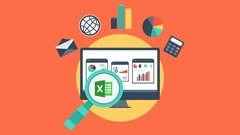Business Analytics Data has become the new gold and has become responsible for churning yet wheels of trade across the globe. With more and more firms switching to the digitization of records into data being stored In cloud and multi-billion dollar investment data warehouses, it has become all the more important to be able to access all that raw data and be able to extract meaningful insights from the collected data to help the business understand the current trend or new opportunities and fabricate business decisions to help the business grow and prosper.
Business data Analytics is data defined and modeled in a way to generate business insights to help draw a road map for the business’s future undertakings and to understand present trends with help of business analytics tools. The main essence of business analytics is to collect all forms of data and turn them into meaningful business insights.
How Many Types of Business Analytics
There are 4 types of business analytics:-
1st:- Descriptive Analysis
This style of analytics is a preliminary stage of data processing that creates a summary of historical data to yield important information and possibly prepare data for future analysis. A business might have done extremely well in the past but may not be doing comparatively well in the current times. To understand the business approach in the past this style of analytics is brought into play. The descriptive analysis creates a post-mortem of the past data to understand the trend or style of business approach and dissect the steps taken in the past to help understand the business strategies taken at that time.
2nd:- Diagnostic Analysis
This style of analytics focuses on data and content to answer the question “ Why did it happen?”, mostly drill-down data discovery, data mining correlation, etc are used for diagnostic analytics. Past performance and a quest for discovering reasons why things happened the way they happened. This style of analytics runs a diagnostic of the past data and tries to find situations where the firm was in a similar predicament in the past and the steps or decisions taken at that time and the outcome of the steps taken. The result of this analytics is often an analytic dashboard.
3rd:- Predictive Analysis
As the name suggests predictive analytics deals with the branch of advanced analytics that deals with future predictions or what might happen in the future depending on the current business data and future business decisions made in favor of the business. Predictive analytics deals with analyzing past and present data to predict future decisions and probabilities of the path that would be beneficial for business growth and development. It deals with data about past and current market trends which helps in understanding future trends and fabricating strategies in favor of helping the business increase revenue and profits. Regression, time series forecasting, etc are used to perform predictive analytics.
4th:- Prescriptive Analysis
This is the final level of business analytics which has three layers to it that help define prescriptive analytics.
- Predictions
This helps in understanding the next alteration in the trend or phase in the market by defining what, why & when will it happen.
- Decisions
How can the firm design and fabricate new strategies around the changing trend to understand the benefit of this change?
- Effects
How will the new strategies or decisions fair against the changing trends and what implications they might have on the rest of the operations in a firm?
Prescriptive analytics works post compilation of all the above three layers to present to you the best course of action for the company resulting in better sales and added revenue.
What is the future scope in Business Analytics?
Depending on the business analytics companies might decide on skipping one or a few levels of business and directly focus on the final level of business analytics i.e. is predictive analytics.
Each business has its separate budget of time, money & resources and might decide on skipping a few steps. The skipping of steps is not considered to be a flaw till the time the corporation can gain productive insights through the study of data and help design a clear path of decisions that will help the firm decide on the best course of action.







